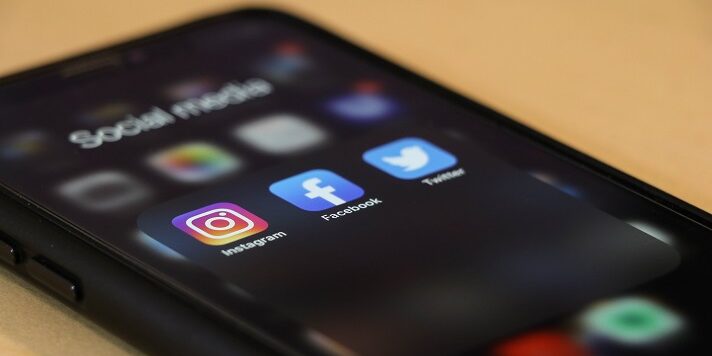Leveraging Social Media to Promote the Profession
Volume 35 Number 2 | April 2021
Tera L. Webb, MLS(ASCP)CM, CPHQ, ASCLS Education Scientific Assembly Chair

Although the medical laboratory science profession has evolved in the past several decades, the public image does not recognize the scope of knowledge, the clinical impact, and the career potentialities of medical laboratory scientists. In spite of the COVID-19 pandemic shining a spotlight on the laboratory, we are commonly not considered part of the healthcare team. A recent study on the perceptions of who is in the healthcare team during the COVID-19 pandemic suggested that the most perceived healthcare team members are physicians and nurses.
To address these stereotypes and improve awareness of our profession, we must become more visible. Visibility is necessary to protect and ensure the viability of the profession. Becoming visible will require us to adapt how we engage with the public and other healthcare professionals. Or we will eventually face the risk of becoming irrelevant. Therefore, this article will explore the use of embracing social media to improve the visibility of the profession.
“Our private social media groups are great for engaging with each other, but these groups are considered an echo chamber. We must extend outside our private groups.”
What is Social Media?
Social media (SoMe) typically refers to an internet-based platform that facilitates information sharing among individuals and businesses. Social media platforms are broad and can serve a variety of purposes for end users. Some of the functions for social media could include:
- Social networking (Facebook, Twitter)
- Professional networking (LinkedIn)
- Media sharing (Instagram, Snapchat, TikTok, YouTube, Flickr)
- Research sharing (ResearchGate, Academia)
- Content production (blogs platforms, like WordPress, and microblogs, like Twitter)
- Knowledge/information/ideas aggregation (Wikipedia, Pinterest)
- Discussion forums (Clubhouse—live audio chats, Reddit, Quora)
- Virtual reality, gaming, hang-out environments (Twitch, Discord)
According to Statista, over 3.6 billion people worldwide used social media in 2020. By 2025, it is expected to grow to 4.41 billion. Social media usage has become an integral part of day-to-day activities with the average user spending 144 minutes per day engaging on these applications. With social media, email is considered the new “snail mail,” where you only open the mail that looks important.
Social Media and the Medical Laboratory Profession
Building on the experiences of other healthcare professions within medicine, nursing, and some allied health, leveraging social media could bring about a positive impact to the profession when executed appropriately. Healthcare professionals have used social media as a tool to disseminate information, educate the public on certain procedures or conditions, promote health behaviors, spread awareness on issues, advocate and promote their profession, and develop a professional network.
Incorporating social media into how medical laboratory scientists contribute to healthcare delivery holds potential for not only bringing visibility to the profession but reframing who we are and the scope of our expertise.
Personally, as a user of multiple social media apps, I have noticed that the most activity with the medical laboratory profession occurs within MLS-specific Facebook groups. This trend is similar to other professions that have been slow to penetrate social media. Our private social media groups are great for engaging with each other, but these groups are considered an echo chamber. We must extend outside our private groups.
Who is Responsible for Visibility?
Who is responsible for saying “We exist!”? Who’s responsible for building our professional image? Visibility is the result of individual (i.e., professionals, customers) and collective (i.e., professional associations, organizations, media) efforts. Although professional organizations create campaigns, laboratorians are the influencers that create interest while building the professional image. Therefore, if we want to build an image that supports the viability of our profession, laboratory professionals must engage in civic virtue.
When adapting the concept of civic virtue from organizational citizenship behavior literature, civic virtue can be defined as, “behavior on the part of an individual that indicates that she/he responsibly participates in, is involved in, or is concerned about the viability of their profession.”
As we shift from behind the scenes to more visibility, the success to the medical laboratory profession depends on laboratorians that are willing to go beyond the technical aspects of their day-to-day roles and be good citizens of the profession. It is the responsibility of individuals to shed light on the many career facets of the laboratory profession, to show the scope of our professional knowledge, and to provide a first-hand depiction of how we contribute to the healthcare team.
Social Media Strategy for Lab Professionals
How can you present a social dialogue that is relevant, impactful, and shines a positive light on the profession? Before building your social media strategy, observe what other healthcare professionals are doing and take notes. Also, observe what types of posts seem to have the most engagement by number of views, comments, shares, and/or likes. Even though most viewers may not comment, share, or like a post, do not underestimate the value of a simple view. Although they are not behaviors of active engagement, views represent exposure, visibility, and potential influence on a viewer’s cognition pertaining to the information being posted.
After performing this high-level scanning of healthcare professionals in the social media environment, it is time to make your social media plan. As the overarching goal is to provide visibility to the profession, your next steps are to assemble the structure and formulate the process for accomplishing this goal.
Assembling the structure relates to the tools and other resources that are needed to begin generating professional posts. A few of the best social media platforms for healthcare professionals are LinkedIn, Twitter, Instagram, and Facebook; choose one or choose all. LinkedIn is great for sharing your involvement in your profession and building community as you connect with others.
To not only network, but also share clinical pearls, practical tips, swiftly disseminate research and new ideas, Twitter is the ideal platform. Twitter is one of the most prominent apps for engaging with the medical and science community while reaching others in the general public. Twitter can also be a great tool for posting live highlights during workshops and conferences or as a course activity. Information is communicated through the Twittersphere using 280 characters or less with the use of hashtags to connect with different social communities.
Instagram can be used for sharing your professional photos and videos. This can be great for medical laboratory faculty who would like to share images of slides or bacteria on plates, media of students performing procedures, or pictures of professional activities that you or your students are involved in.
Lastly, Facebook is considered the “general purpose” social media platform. It is the most widely used social media app in the United States, and it is multifunctional. The primary use is social networking, but it can be used for professional networking in Facebook groups and sharing media, research, and other information.
Once you have chosen your preferred apps, there are other bells and whistles that you could add on. Managing a social media presence requires some time and effort. However, there are ways to streamline the process. You can use a dashboard like TweetDeck or Hootsuite to manage and strategically schedule posts across your different social media apps. For designing, another useful app is Canva. Canva is great for editing pictures and designing graphics for your post.
The next step is to formulate a process by identifying your tactic. Although there are numerous benefits to leveraging social media for promoting the profession, the challenge is how can it be done in a positive, impactful way for patients, laboratory professionals, and the laboratory profession. Some healthcare professions have developed social media guidelines for best practices. While the medical laboratory profession has not established best practices, the American Medical Association can be used as a model for guidelines.
Examples of best practices include maintaining patient privacy and confidentiality (refer to HIPAA); not overstepping professional scope; not misrepresenting when speaking for yourself vs an organization; being professional and accurate in content posted; and being aware of guidelines set by your employer, educational institution, or clinical training site. Furthermore, always be consistent when referring to our professional name. For instance, using medical laboratory scientist instead of medical technologist.
Tip for Educators: To increase your professional digital footprint, build your own website. Your site could be used as a hub to your teaching, research, and service. It is the ideal platform for integrating your social media, creating your academic portfolio, disseminating your research, and providing resources pertaining to your academic/professional interest. Visit my site for an example: www.terawebb.com
After understanding some of the best practices, what should you post? Trying to figure out what to post can be a daunting task. There are two ways to generate content. You can be content creator or content curator. As a creator, you are organically composing your post from beginning to end. Maybe you took an event picture and now you are composing a caption—that’s content creation. However, content curation is finding and sharing credible and valuable information with your audience. It is as simple as taking a quote from an article to use as the caption, attaching the article for reference, and hitting share.
If you are a social media novice, being a content curator is a great icebreaker to posting. Moreover, whether you are a creator or curator of medical laboratory science information, you are bringing visibility to the profession and establishing yourself as a medical laboratory expert among your audience.
As you build and refine your strategy, a few ASCLS lab influencers to follow on Twitter are:
- Dana Powell Baker, MLS(ASCP)CM: @ThatLabChick
- Brandy Gunsolus, DCLS, MLS(ASCP)CM: @BnrdG
- Kamran Mirza, MD, PhD: @KMirza
- Aaron Odegard, MLS(ASCP)CM: @odie0222
- Kyle B. Riding, PhD, MLS(ASCP)CM: @KRidingMLS
- Rodney E. Rohde, PhD: @RodneyRohde
Now that you have a framework as a guide and laboratory influencers to follow, my challenge to you is to jump start your professional posts during Medical Laboratory Professionals Week (April 18-24, 2021). If you are new to posting, make a goal to share posts with a short caption. If you’re an experienced social media poster, maybe your goal could be to develop a routine to be less sporadic (e.g., once a month, once a week).
As you post, don’t forget your hashtags: #IamASCLS #Lab4Life #LabWeek2021
Ready, Set, POST!
References
Barreto, J. E., & Whitehair, C. L. (2017). Social media and web presence for patients and professionals: evolving trends and implications for practice. PM&R, 9(5), S98-S105.
El-Awaisi, A., O’Carroll, V., Koraysh, S., Koummich, S., & Huber, M. (2020). Perceptions of who is in the healthcare team? A content analysis of social media posts during COVID-19 pandemic. Journal of Interprofessional Care, 34(5), 622-632.
Robinson, S. L., & Morrison, E. W. (1995). Psychological contracts and OCB: The effect of unfulfilled obligations on civic virtue behavior. Journal of organizational behavior, 16(3), 289-298.
Ventola, C. L. (2014). Social media and health care professionals: benefits, risks, and best practices. Pharmacy and therapeutics, 39(7), 491.
Tera L. Webb is an Instructor in the Department of Clinical and Diagnostic Sciences in the University of Alabama at Birmingham School of Health Professions. She can be found at www.TeraWebb.com; on LinkedIn: www.linkedin.com/in/terawebb; on Twitter: @TERAology; and on Instagram: Tera_webb.
Photo credit: dole777 on Unsplash
